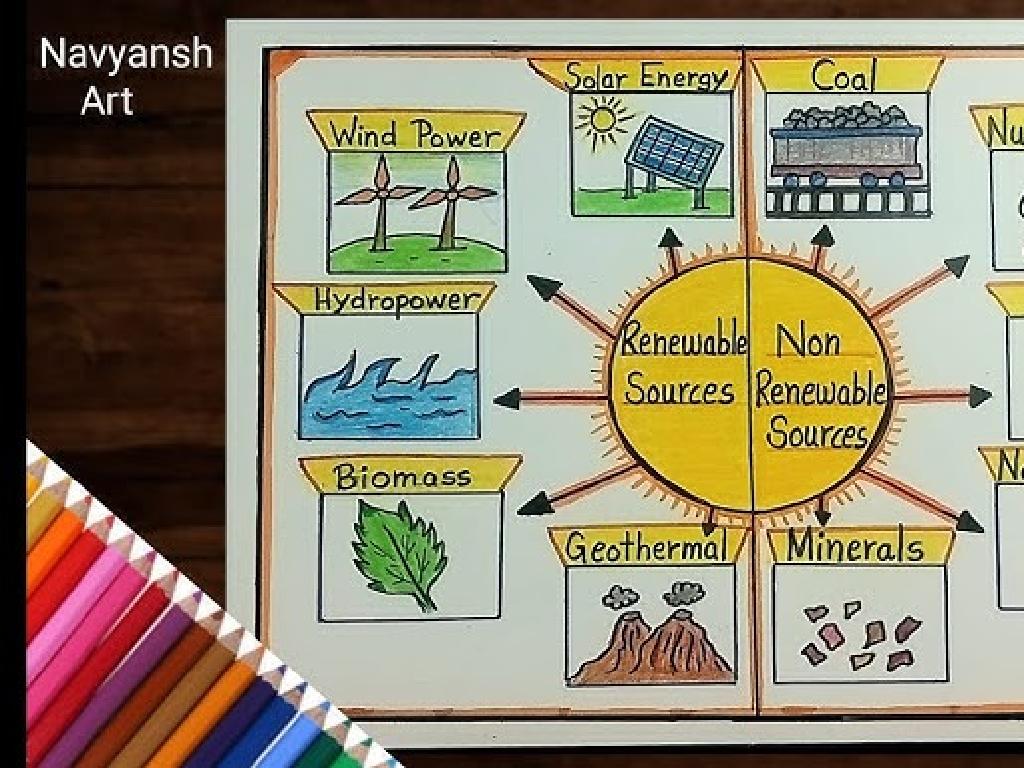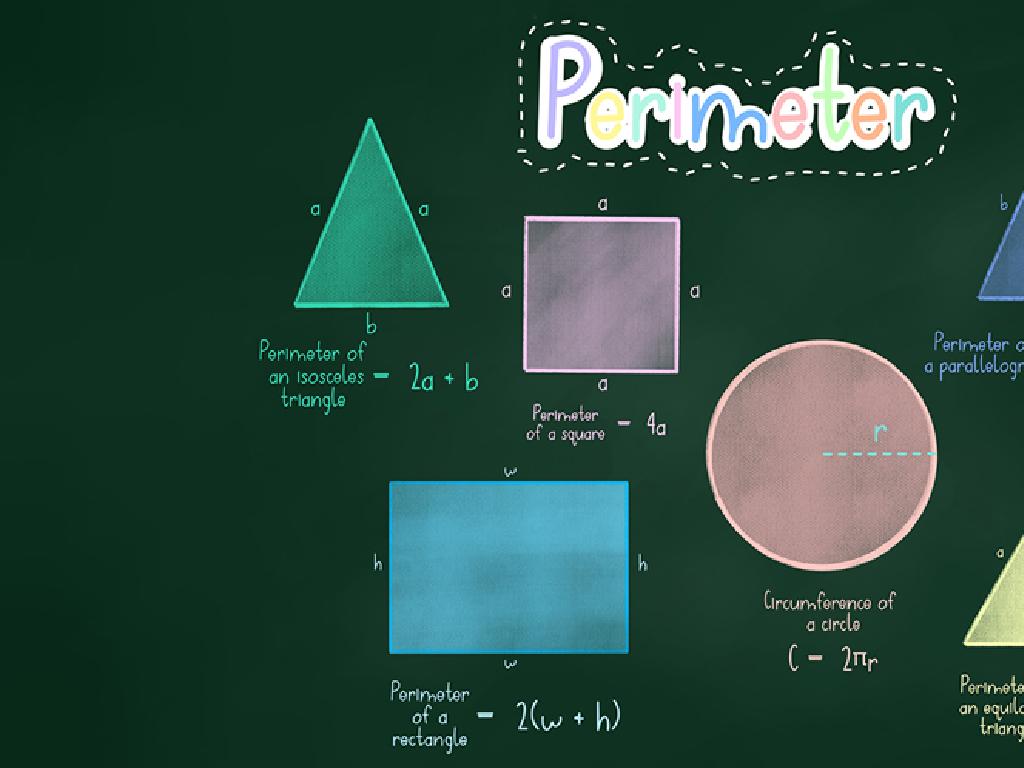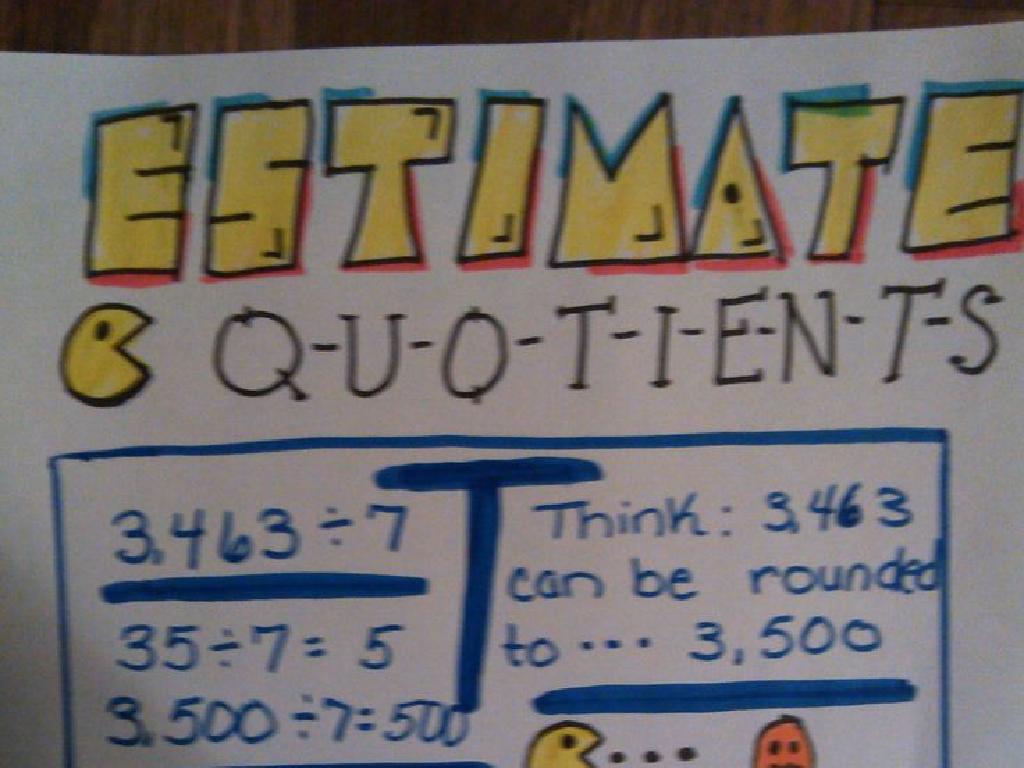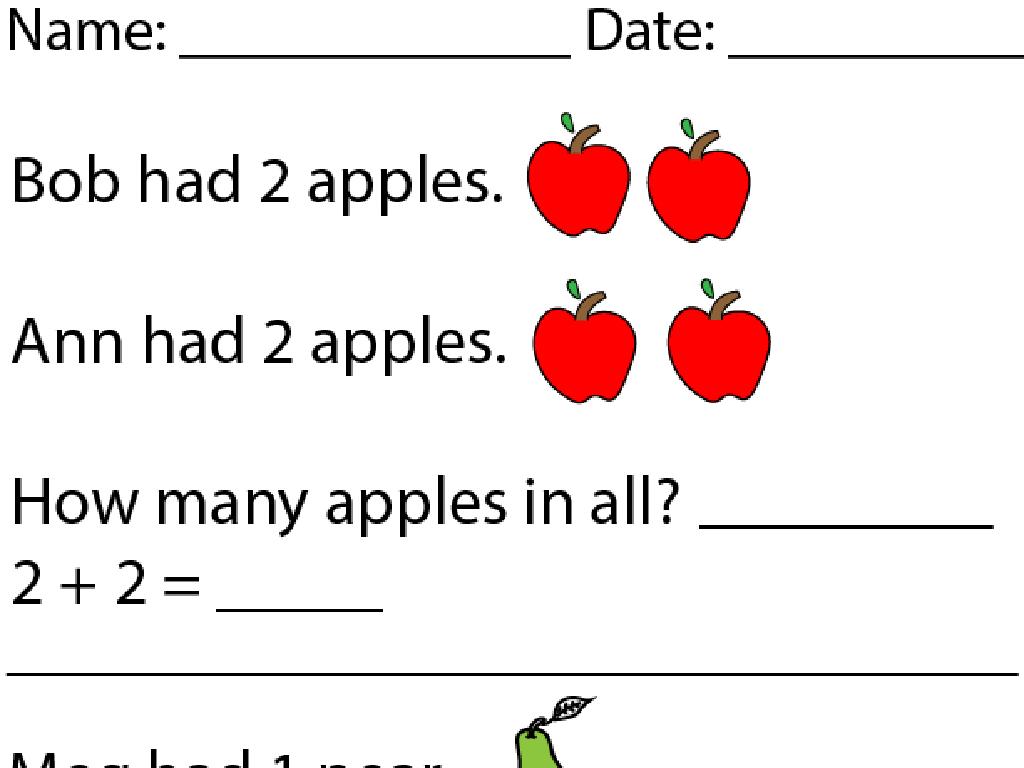Create Varied Sentences Based On Models
Subject: Language arts
Grade: Seventh grade
Topic: Descriptive And Creative Writing
Please LOG IN to download the presentation. Access is available to registered users only.
View More Content
Enhancing Writing with Sentence Variety
– Understanding sentence variety
– Importance in descriptive writing
– Varied sentences make writing engaging and expressive.
– Techniques for varied sentences
– Use length, structure, and starters for diversity.
– Practice creating your own
– Try using different sentence types in a short paragraph.
|
This slide introduces the concept of sentence variety and its significance in making writing more interesting and effective. Explain that varying sentence structure, length, and beginnings can transform a piece of writing from monotonous to captivating. Discuss techniques such as mixing simple, compound, and complex sentences, as well as starting sentences with different words or phrases. Encourage students to experiment with these techniques in their writing. For practice, they can take a simple paragraph and rewrite it using varied sentence structures. This exercise will help them see the difference in their writing and understand the power of sentence variety.
Understanding Sentence Structure
– Review sentence types
– Simple, compound, complex sentences
– Mix types for engaging writing
– Variety adds rhythm and interest
– Activity: Analyze a paragraph
– Identify types in a book paragraph
|
Begin with a review of simple, compound, and complex sentences to ensure students recall the differences. Emphasize how mixing sentence types can make their writing more dynamic and maintain reader interest. For the activity, provide a paragraph from a book and have students identify the sentence types. This will help them recognize structure in practice. Encourage students to explain why authors might choose one type over another in different contexts. For the teacher: Prepare a paragraph with varied sentence structures beforehand. Consider having different paragraphs for groups to compare and contrast their findings. Discuss as a class afterward.
Sentence Length and Rhythm
– Mix short and long sentences
– Short sentences create tension, long sentences add detail.
– Sentence length affects engagement
– Short sentences can quicken the pace, while longer ones slow it down, affecting how readers feel.
– Example: Short vs. long sentences
– ‘The lake was still. A canoe glided over the water.’ vs. ‘The tranquil and glass-like lake was disturbed only by the smooth passage of a canoe, its movement barely causing a ripple.’
– Practice creating sentence rhythm
|
This slide introduces the concept of using varied sentence lengths to create rhythm in writing, which can significantly impact reader engagement. Short sentences can add drama and tension, while longer sentences can provide more detail and slow down the narrative, allowing readers to immerse themselves in the scene. Provide an example to illustrate the difference in effect between short and long sentences. Encourage students to practice writing their own examples, focusing on how changing sentence length can alter the mood and pace of a story. This exercise will help them become more deliberate and creative in their writing style.
Using Descriptive Language in Writing
– Adjectives and adverbs enhance sentences
– They add ‘color’ and detail to your narratives.
– ‘Show, don’t tell’ with sensory details
– Use the five senses to paint a vivid picture.
– Exercise: Enrich a simple sentence
– Take a basic sentence and embellish it with descriptive language.
|
This slide aims to teach students how to use descriptive language to make their writing more engaging. Start by explaining the role of adjectives and adverbs in adding specificity and depth to sentences. Then, introduce the concept of ‘show, don’t tell,’ encouraging students to use sensory details to show the reader what’s happening rather than just telling them. For the exercise, provide a bland sentence and have students enhance it with descriptive words, focusing on incorporating sensory details. This activity will help students practice their use of descriptive language and understand its impact on creative writing. Possible sentences for the exercise could include ‘The dog ran across the yard,’ which students could transform into ‘The energetic dog sprinted across the lush, green yard, its fur glistening in the sunlight.’
Incorporating Figurative Language in Writing
– Use similes and metaphors for imagery
– Compare two unlike things using ‘like’ or ‘as’, e.g., ‘as brave as a lion’.
– Personify to animate the non-living
– Give human traits to objects or ideas, e.g., ‘The wind whispered secrets’.
– Write a weather metaphor
– Describe the weather by likening it to something else, e.g., ‘The sun smiled down’.
– Enhance descriptive writing
|
This slide aims to teach students how to enrich their descriptive writing by using figurative language. Similes and metaphors help create strong imagery, making descriptions more vivid and engaging. Personification adds depth and emotion by attributing human characteristics to inanimate objects or abstract ideas. For the class activity, students will practice writing their own sentences with a metaphor related to the weather, which will help them understand the concept of figurative language better. Encourage creativity and provide feedback on their examples. This exercise will not only improve their writing skills but also enhance their ability to think critically about language use.
Starting Sentences Differently
– Avoid repetitive beginnings
– Use conjunctions and transitions
– Words like ‘and’, ‘but’, ‘because’ can vary sentence starts
– Employ prepositional phrases
– Phrases like ‘in the morning’ or ‘under the table’ add variety
– Group Activity: Sentence Rewriting
– Rewrite given sentences with classmates, starting them differently
|
This slide aims to teach students how to enhance their writing by varying sentence beginnings, thus avoiding monotony and making their writing more engaging. Students should understand that starting multiple sentences the same way can make their writing dull. Introduce conjunctions, transitions, and prepositional phrases as tools to create variety in sentence structures. For the group activity, provide sentences that all start the same way and have students work in groups to rewrite them, using different sentence starters. This will help them practice the concepts taught and understand the impact of varied sentence beginnings on the flow and interest of their writing.
Combining Sentences for Complexity
– Create complex from simple sentences
– Use connectors to add depth to writing.
– Conjunctions and relative pronouns
– Words like ‘and’, ‘but’, ‘because’, ‘which’, ‘who’.
– Class Exercise: Sentence combining
– Combine ‘The dog barked.’ with ‘It was loud.’
|
This slide introduces the concept of sentence complexity, which is essential for enhancing writing skills. Start by explaining how simple sentences can be combined to form complex ones, adding depth and interest to writing. Highlight the importance of conjunctions (e.g., ‘and’, ‘but’, ‘because’) and relative pronouns (e.g., ‘which’, ‘who’) in joining sentences. For the class exercise, provide students with pairs of simple sentences and guide them to combine these using appropriate conjunctions or relative pronouns to create complex sentences. Encourage creativity and discuss the changes in meaning or emphasis that result from sentence combining. Offer feedback and alternative combinations to reinforce learning.
Class Activity: Crafting Descriptive Paragraphs
– Write a descriptive paragraph
– Use varied sentence structures
– Mix simple, compound, and complex sentences
– Incorporate descriptive language
– Adjectives, adverbs, and sensory details enhance imagery
– Exchange paragraphs for peer review
– Offer constructive feedback on clarity and descriptiveness
|
In this activity, students will apply their knowledge of sentence structure and descriptive writing to compose a paragraph. They should aim to use a variety of sentence types to make their writing more engaging. Encourage them to use descriptive language, including vivid adjectives, adverbs, and sensory details to paint a picture with their words. After writing, students will pair up to exchange their work and provide each other with feedback. This peer review process will help them learn to critique constructively and improve their own writing. Possible activities for different students could include describing a favorite place, a memorable event, or an imagined setting, ensuring they focus on using the descriptive techniques discussed in class.
Wrapping Up: Sentence Variety
– Recap: Sentence Variety Lesson
– Practice Makes Perfect
Regular practice is key to improving writing skills.
– Homework: Craft a Short Story
Write a story incorporating lessons learned today.
– Use Varied Sentences & Descriptions
Include different sentence structures and vivid language.
|
As we conclude today’s lesson, remind students of the different sentence structures we’ve discussed and how they can enhance writing. Emphasize the importance of practice in mastering the art of writing. For homework, students should write a short story using varied sentences and descriptive language to demonstrate their understanding of the concepts. Encourage creativity and the use of a rich vocabulary. Provide examples of varied sentence structures and descriptive phrases they might use. This exercise will help solidify their learning and allow them to apply the techniques in a creative context.






